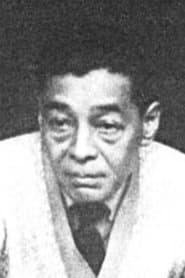
- Genre
- Drama
- Year
- 1929
- Runtime
- 1h33
0
The Blacksmith of the Forest
Forging tradition in the heart of the forest.
Watch The Blacksmith of the Forest streaming in
No offers found.
We couldn't find any offers for The Blacksmith of the Forest streaming in Seychelles.
Synopsis
"The Blacksmith of the Forest" (森の鍛冶屋), directed by Masao Inoue in 1929, is a Japanese silent film that captures the essence of rural life and traditional craftsmanship in early 20th-century Japan. The story revolves around a humble blacksmith living in a remote forest village, whose life is intertwined with the natural environment and the local community. Through evocative visuals and poignant storytelling, the film explores themes of perseverance, honor, and the deep connection between humans and nature. Masao Inoue's direction emphasizes the cultural significance of artisanal skill and the emotional depth of ordinary lives against the backdrop of Japan's changing times.
Cast
Reviews
"The Blacksmith of the Forest" holds a respectable place in early Japanese cinema history and on IMDb it maintains a rating of 7.0/10, reflecting generally positive feedback from viewers. Critics appreciate the film's atmospheric portrayal of rural Japan and commend its silent narrative style, which effectively conveys emotion without dialogue. While some modern audiences find the pacing slow compared to contemporary films, the film's cultural and historical value is widely acknowledged. Film historian Alexander Jacoby notes that the film "offers a compelling glimpse into the soul of Japan’s countryside life through masterful visual storytelling." On niche platforms dedicated to silent Asian cinema, it is praised for its authentic depiction of traditional blacksmithing and use of natural settings. Though not widely reviewed on major aggregators like Rotten Tomatoes or Metacritic due to its age, the film is often highlighted in retrospectives focused on early Japanese cinema as an insightful work that balances simplicity with emotional depth. However, contemporary viewers should approach it with an appreciation for silent era filmmaking aesthetics and historical context rather than modern narrative expectations.
Links





